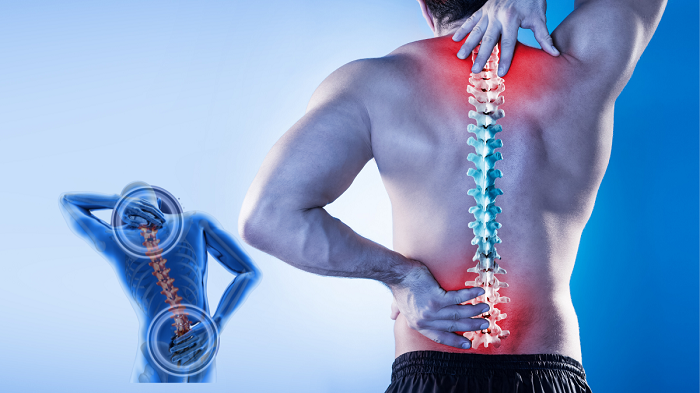CALL US NOW :
MAILING ADDRESS :
LOCATION ADDRESS :
NALLAGANDLA
NALLAGANDLA
Mon – Fri 9 am–3 pm, 5–8 pm
Sat: 9 am–5 pm
Sunday: Closed

The back is a robust structure composed of muscles, ligaments, nerves, and the spinal cord, working together in a coordinated manner to support the spinal column and body. While versatile, the back is susceptible to injuries and certain health conditions.
The spinal column, comprising 33 vertebrae bones arranged in a spinal canal, is the core of the back. It is divided into five sections:
Prolonged periods of sitting and working, participating in strenuous activities, and experiencing stress can all contribute to the development of back pain. The prevalence of back pain is increasing, with a significant number of middle-aged individuals experiencing it at some point in their lives.
Back pain can vary from a mild, dull ache to a severe, shooting pain in the spine. The pain may come and go or be constant, and it can worsen with specific activities such as exercise or sitting for long periods.
Although back pain can be disruptive and impact daily activities, the majority of cases improve or resolve within a few months with proper care and treatment.
Back pain can affect individuals of all ages for various reasons. As people age, the likelihood of experiencing lower back pain increases due to degenerative disc diseases and issues related to vertebral discs, the lumbar spine, ligaments, nerves, and lower back muscles.
Upper back pain may arise from a range of conditions, including aortic disorders, tumors in the chest, and spinal inflammation. Any dysfunction within the components of the spine can lead to back pain, and in some cases, the exact cause remains unclear.
Back Pain Due to Strain
Strain, tension, or trauma are among the most prevalent causes of back pain. Common contributors include:
Certain activities can lead to muscle strains or spasms, such as: Improper lifting techniques
Issues related to the structural components of the spine and other spinal conditions can also lead to back pain, including:
Everyday activities and poor posture can also contribute to back pain:
Additionally, certain medical conditions can cause back pain, including:
Several risk factors may contribute to lower back pain, including:
Statistically, women are more likely to experience lower back pain than men, potentially due to hormonal factors.
In cases of mild back pain, symptoms may resolve with rest and home remedies. However, medical intervention may be necessary depending on the underlying cause. Treatment aims to address the root cause of the pain.
Effective pain management techniques include rest, ice application, and heat therapy. In addition to self-care, medications, therapies, and surgical options are available.
A spine specialist may recommend medications based on the cause and severity of the back pain, including:
It is crucial to take these medications under the guidance of a spine specialist, as incorrect dosages can lead to further complications.
Surgery for Back Pain
A spine surgeon may recommend surgical intervention only when a patient experiences severe disc problems, spinal abnormalities, or compressed nerves. Surgical procedures may include:
Back pain can be managed through various treatments. Over recent decades, numerous procedures have been developed to address back problems effectively.
Dr. Tanusree Chakraborty specializes in spine and neurological conditions, making her well-equipped to treat back pain, especially when related to spinal issues like herniated discs, nerve compression, or degenerative diseases. She offers both conservative and surgical treatments, depending on the specific diagnosis and severity of the condition.
Consulting Dr. Chakraborty will help assess the cause of your back pain and determine the best treatment options, whether through physical therapy, medications, or surgical intervention. Her expertise in neuro and spine conditions ensures comprehensive care.
Would you like to schedule a consultation or get more details on how to reach her clinic? Contact Us